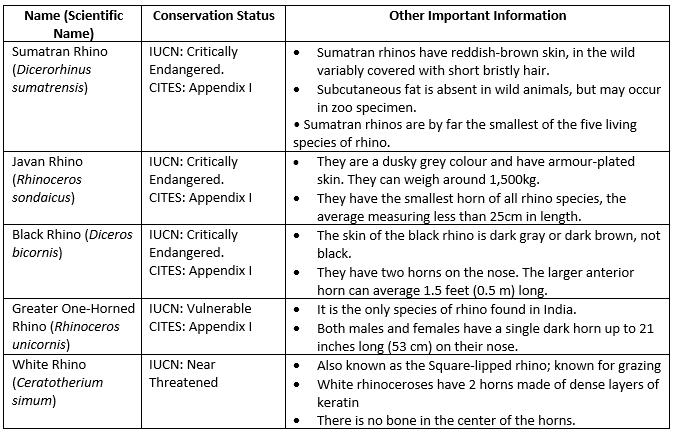SYLLABUS
GS-3: Conservation, environmental pollution and degradation, environmental impact assessment
Context: Recently, a South African university launched an anti-poaching campaign with a unique approach, injecting radioactive isotopes into rhino horns.
About Rhisotope Project.
- The University of the Witwatersrand, supported by the International Atomic Energy Agency (IAEA), formally launched the Rhisotope Project.
- The university hopes the initiative will mark the start of mass treatment of South Africa’s declining rhino population.
- The Rhisotope Project is embedding radioactive isotopes in the horns of rhinos at the Waterberg Biosphere of Johannesburg in South Africa, as an effort to prevent poaching.
- Rhinos previously injected with the isotopes during Rhisotope’s test phase turned out unharmed, so the initiative has now officially launched.
- Even the tiniest amount of radioactive particles in a rhino horn can be picked up by detectors at airports, harbors and other international gateways smugglers may try to sneak past.
- It claimed that the method is harmless for the rhinos and allows customs agents to detect trafficked horns and low doses of isotopes are non-invasively injected into rhino horns.
- These isotopes make the horns:
Detectable via Radiation Portal Monitors (RPMs) at borders, ports, and airports.
Useless and toxic for human consumption, especially in illegal traditional medicine markets. - While the project itself is not a cure-all or silver bullet to curb poaching, the researchers hope it will prove to be a great deterrent compared to dehorning, in which rhinos’ horns are removed to deter poaching.
Significance of the project
- Anti-poaching deterrent: Embedding radioactive isotopes into rhino horns makes them detectable at borders and airports, significantly reducing the chances of successful smuggling and discouraging poachers and traffickers.
- Non-lethal and safe innovation: Scientific trials, including radiation dose modeling and biological testing, confirm that the embedded isotopes do not harm the rhinos, making it a safe conservation tool.
- Global enforcement integration: The project leverages existing global nuclear security infrastructure (over 11,000 radiation monitors at borders), providing a powerful and immediate method for tracking and intercepting illegally trafficked rhino horns.
About Rhinoceros

- Rhinos are large, herbivorous mammals known for their thick skin and one or two horns on their snouts.
- There are five species of rhinos: White, Black, Greater One-Horned, Javan, and Sumatran.
- Rhino horns are made of keratin (the same protein as human nails) and rhino horns can regrow if broken.
- Rhinos are mostly found in Africa and Asia, inhabiting grasslands, savannas, forests, and swamps.
- All rhino species are threatened by poaching and habitat loss, with some like the Javan and Sumatran rhinos critically endangered.
Threats to Rhinoceros Survival
- Poaching and Illegal Wildlife Trade: Primary threat is driven by high demand for rhino horn in traditional medicine and as a status symbol even though Rhino horn is made of keratin.
- Habitat Loss and Fragmentation: cause inbreeding and limit food/water availability.
- Drought: Kills grass and aquatic plants on which rhinos graze.
- Human Wild Conflict: Incidents of rhinos destroying crops and damaging property often lead to retaliatory killing.



